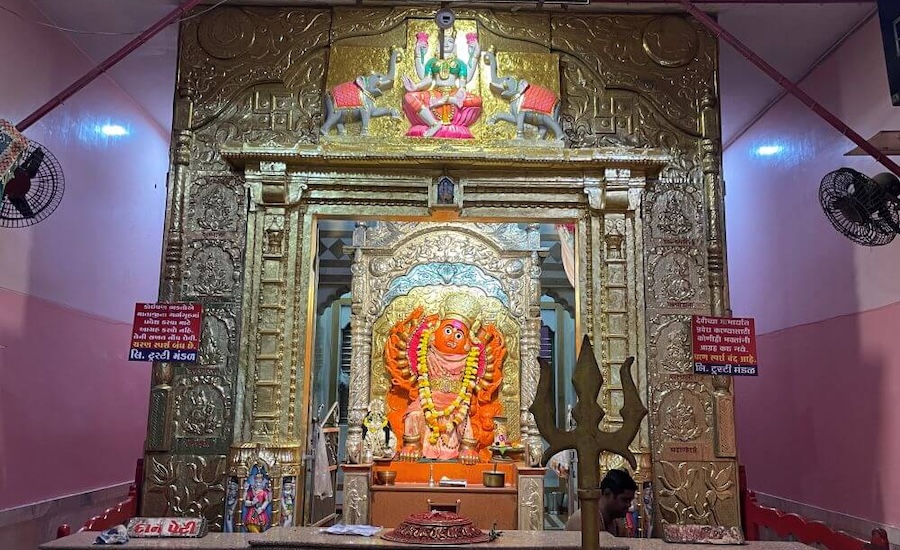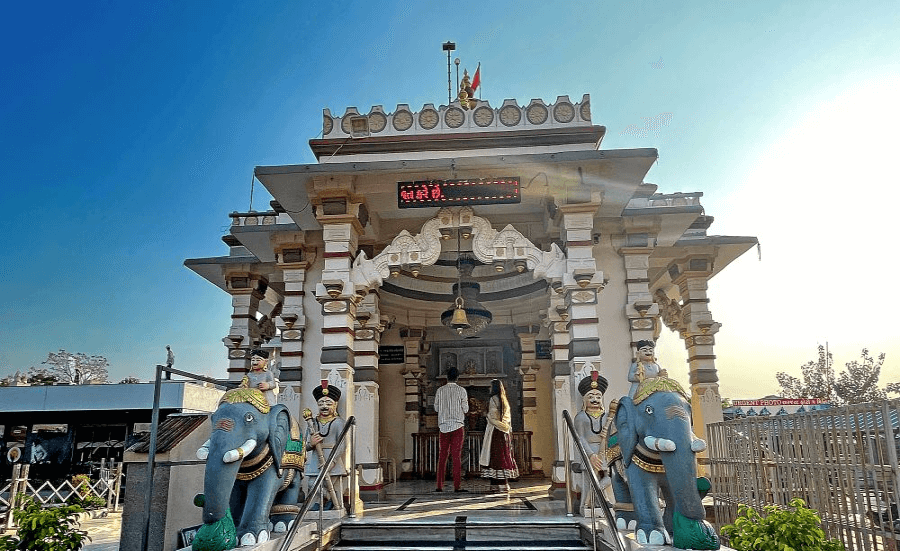
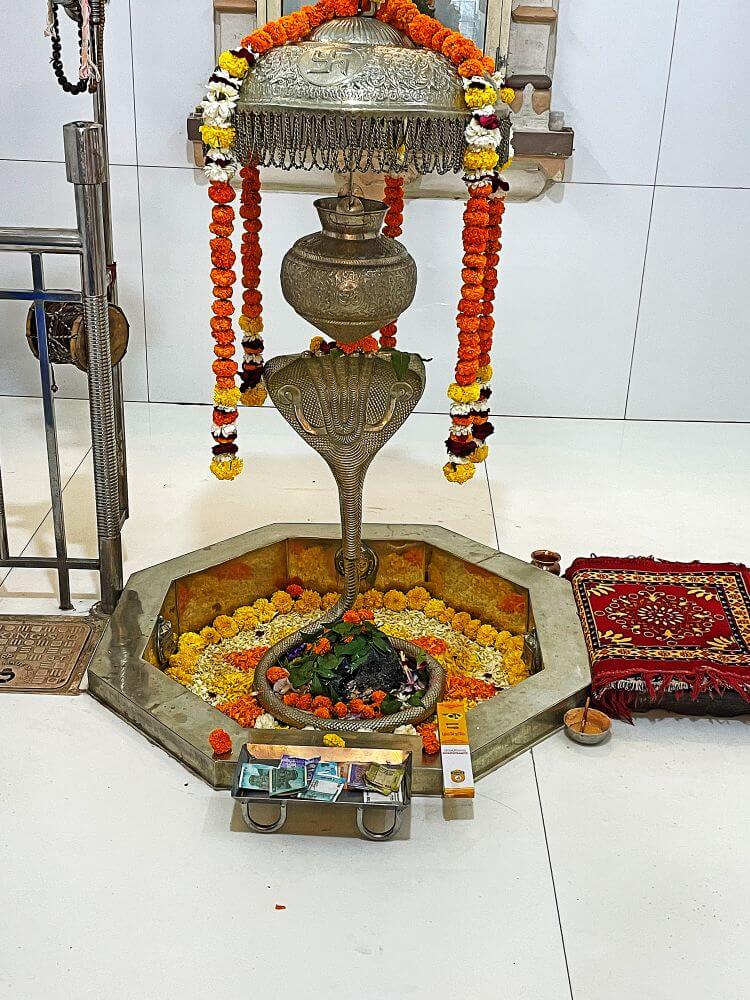 The Galateshwar (or Galiteshwar) Mahadev Temple, featuring a colossal 62-foot-high statue of Lord Shiva and a cave temple housing replicas of the 12 Jyotirlingas, is a major attraction for devotees and tourists alike. Located on the banks of the Tapi River, the temple holds great mythological significance. According to legend, Lord Shiva manifested here after Sage Narada was freed from a curse given by the Tapi River. The confluence of the Tapi, Gupt Ganga, and Naradi rivers is believed to have healing properties, with devotees believing that bathing in this holy water cures ailments.
The Galateshwar (or Galiteshwar) Mahadev Temple, featuring a colossal 62-foot-high statue of Lord Shiva and a cave temple housing replicas of the 12 Jyotirlingas, is a major attraction for devotees and tourists alike. Located on the banks of the Tapi River, the temple holds great mythological significance. According to legend, Lord Shiva manifested here after Sage Narada was freed from a curse given by the Tapi River. The confluence of the Tapi, Gupt Ganga, and Naradi rivers is believed to have healing properties, with devotees believing that bathing in this holy water cures ailments.
The 47th chapter of the Tapi Mahatmya describes the legend of Galateshwar. It narrates how Sage Narada was cursed by the Tapi River for stealing the Tapi Purana. The legend goes as follows : Due to the curse of Sage Kapila, King Sagara’s 60,000 sons perished. To grant them salvation, it was necessary to bring the Ganga River to Earth. King Sagara’s great-grandson, Bhagiratha, performed intense penance to achieve this. Lord Rudra (Shiva) eventually granted permission for Ganga to descend to Earth. However, Ganga initially refused, saying that since the Tapi River, an esteemed and holy river, already flowed on Earth, her presence was unnecessary. To diminish the significance of the Tapi River, Sage Narada, acting on the advice of the gods, stole the Tapi Purana (a sacred text detailing Tapi’s greatness). Following this event, Ganga agreed to descend to Earth.
As anticipated by Narad the theft of the sacred Tapi Purana reduced the Tapi River’s divine stature. Upon realising that Narada had stolen her Purana, the Tapi Mata cursed Narada, causing his face to become discoloured with marks resembling leprosy. Seeking liberation from this curse, Narada performed penance at the confluence of the Tapi, Gupt Ganga, and Naradi Rivers. During his penance, Narada recited prayers in praise of the Tapi River:
“Peypiyamanabhu Marutsamuhe Pavitrataneik Nikrushta Dehe।
Munidra Sansevita Teera Gehe Namah Stapini Suryadehe ।।”
It means, ‘O Mother Tapi, you have been purifying all living beings for eternity. Many sages have resided on your banks. You are born of Lord Surya (the Sun God). I bow to you, O Divine Goddess.’ Moved by his devotion, Tapi Mata appeared before Narada. Her anger subsided, and she forgave him, curing him of his affliction. The location where Tapi’s anger “melted away” became the sacred site of Galateshwar Mahadev, where Lord Shiva manifested as the Galateshwar Mahalinga. The term “Galateshwar” signifies the spot where Tapi’s anger “melted away.”
The day Narada was healed was the full moon of the month 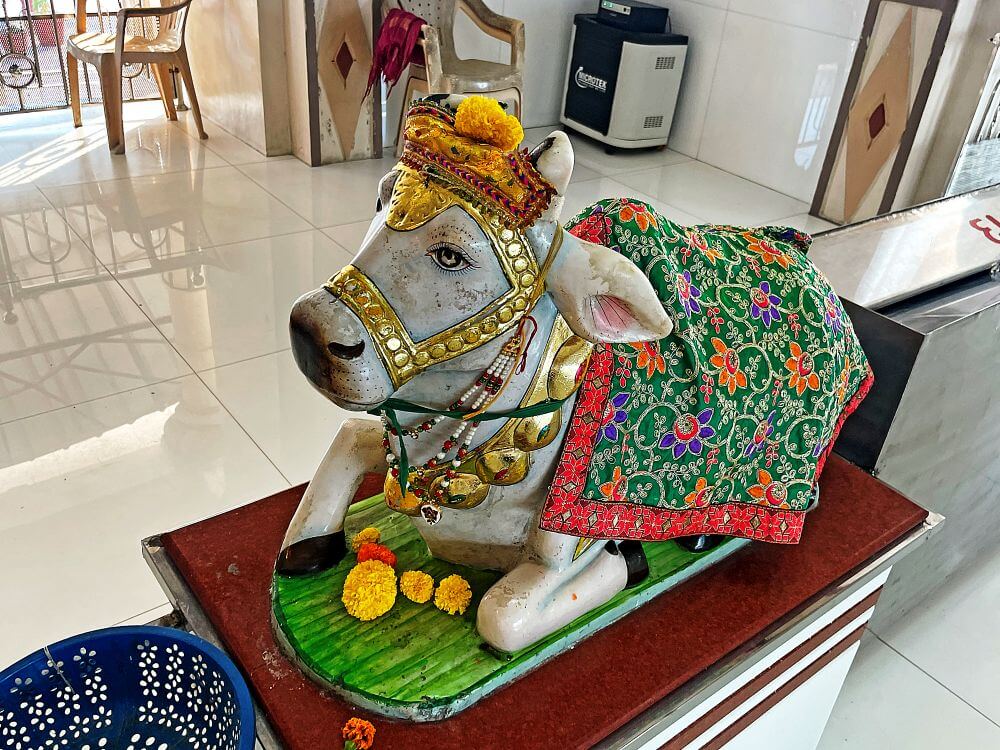 of Magha, a day still celebrated for its spiritual significance. It is believed that on this day, the Ganga River merges with the Tapi to offer prayers and immerse herself within the river. Bathing in the Triveni Sangam (the confluence of the Tapi, Gupt Ganga, and Naradi Rivers) on this day is said to confer the same merit as bathing at Prayagraj (the sacred Triveni Sangam in Uttar Pradesh).
of Magha, a day still celebrated for its spiritual significance. It is believed that on this day, the Ganga River merges with the Tapi to offer prayers and immerse herself within the river. Bathing in the Triveni Sangam (the confluence of the Tapi, Gupt Ganga, and Naradi Rivers) on this day is said to confer the same merit as bathing at Prayagraj (the sacred Triveni Sangam in Uttar Pradesh).
In the village of Timba, the Galateshwar Mahadev Temple is spread across several acres of land. As one enters through the tall, arched entrance gate made of pink stone, the left side is lined with eateries catering to devotees and tourists. Adjacent to this area is the temple’s administrative building.
The entire temple premises are beautifully paved with paver 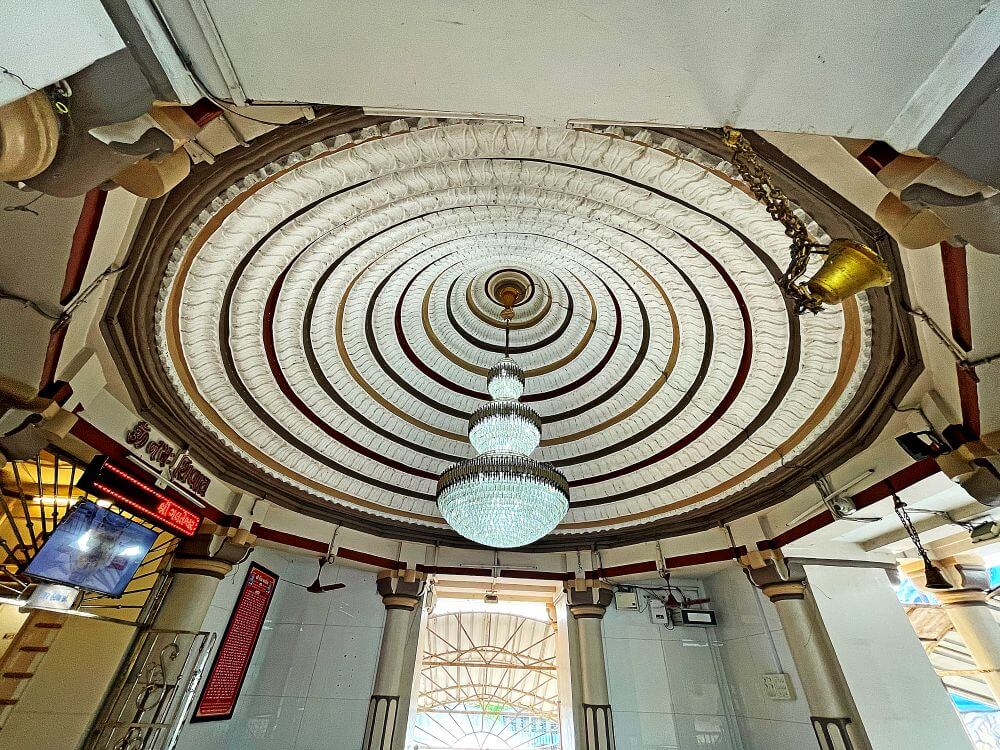 blocks, ensuring a clean and orderly environment. The grounds are further adorned with lush flower gardens, adding to the temple’s serene atmosphere. A short distance from the main entrance, there is a paid parking lot for visitors’ convenience.
blocks, ensuring a clean and orderly environment. The grounds are further adorned with lush flower gardens, adding to the temple’s serene atmosphere. A short distance from the main entrance, there is a paid parking lot for visitors’ convenience.
At the main courtyard of the temple, a grand entrance arch welcomes visitors, flanked on both sides by statues of lions, symbolising protection and strength. A short walk ahead leads to the awe-inspiring 62-foot tall statue of Lord Shiva, seated in a meditative pose on a tiger skin, with four arms symbolising his divine powers. Behind this colossal statue, an equally tall artificial mountain has been constructed, complete with a man-made cave beneath it. In front of the statue, there is a massive marble statue of Nandi (Shiva’s sacred bull) and a tortoise sculpture. Adding to the splendour, a large fountain enhances the serene atmosphere around the statue.
Upon entering the cave temple visitors first encounter a replica of the Shivalinga from the Somnath Temple.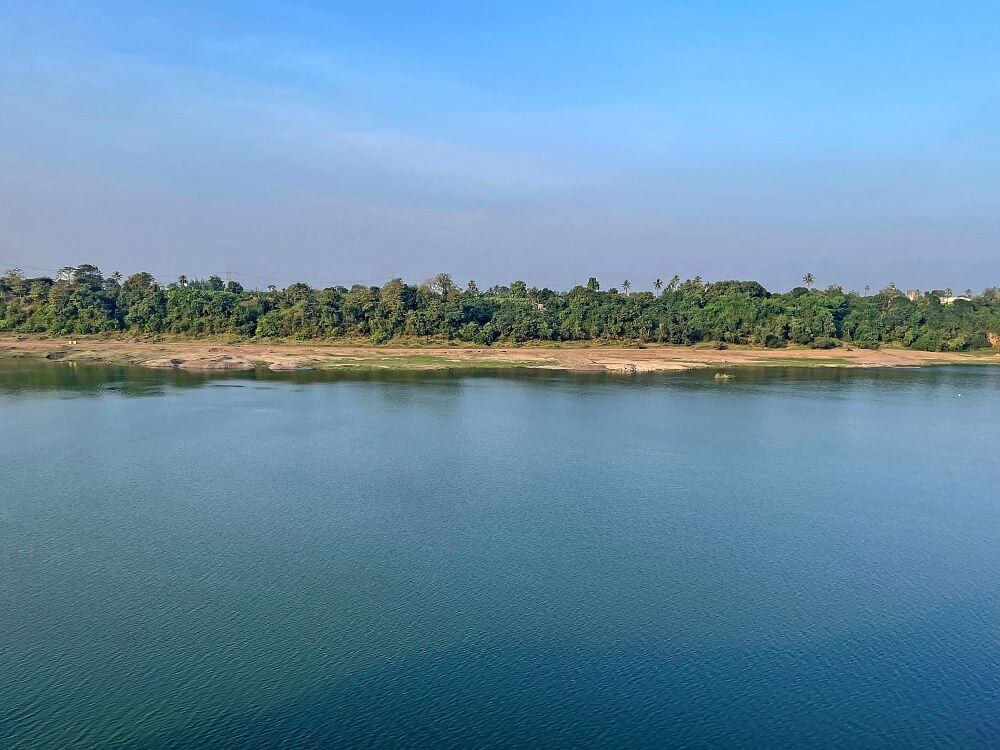 Along the walls are replicas of the 12 Jyotirlingas, with descriptions of each sacred site displayed behind them.
Along the walls are replicas of the 12 Jyotirlingas, with descriptions of each sacred site displayed behind them.
There is also a crystal Shivalinga, alongside idols of Goddess Parvati and Lord Ganesha. The temple complex includes three primary temples: the Galateshwar Mahadev Temple, Ram Temple and Hanuman Temple. The Ram Temple, constructed in 1999, features intricately carved marble pillars and a sanctum with idols of Lord Rama, Lakshmana, and Sita, adorned with decorative ornaments. The Hanuman Temple, located opposite the Ram Temple, houses an idol of Lord Hanuman covered in vermilion. Devotees often attach coins to the idol as a ritual of devotion.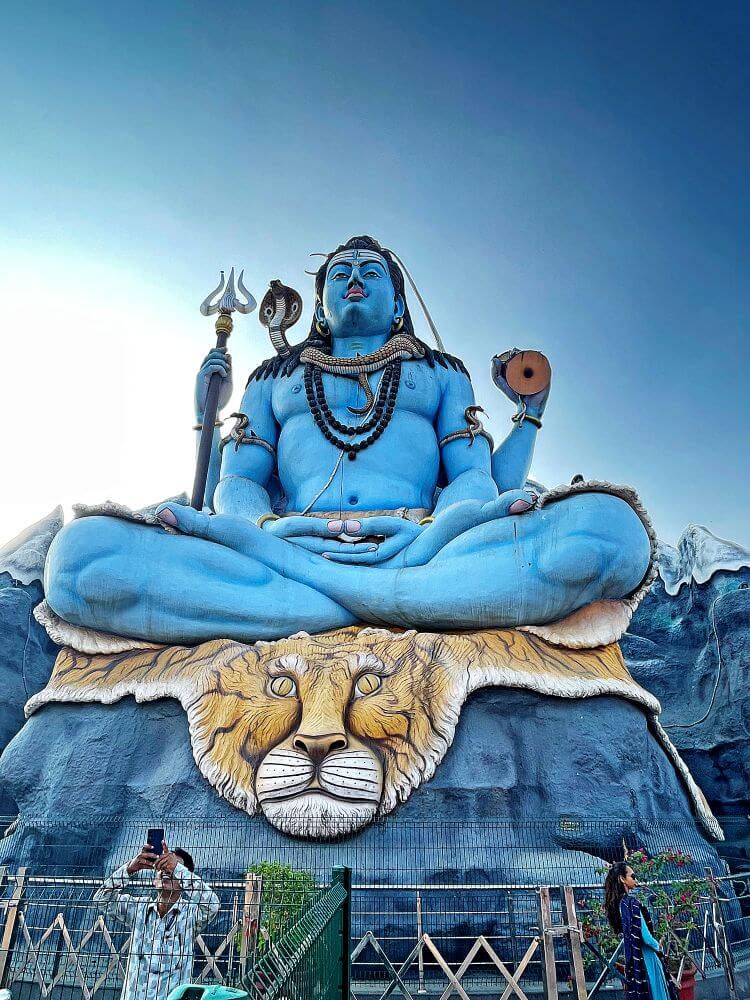
To the right of the grand Shiva statue, along the banks of the Tapi River, lies the main temple dedicated to Lord Galateshwar Mahadev. The temple follows a traditional architectural style with a small mukha-mandapa (entrance porch), sabhamandapa (assembly hall), and garbhagriha (sanctum sanctorum). The sabhamandapa is adorned with a domed roof featuring several smaller domes. Atop the main dome, a circular parapet is placed, housing the temple’s sacred dhwaj-danda (flagpole). The garbhagriha is crowned with a shikhara (spire) designed in the Urushringa style, where smaller spires gracefully surround the central one. A circular parapet at the pinnacle of this shikhara allows access to the top via an iron staircase connected to the sabha-mandapa.
The sabhamandapa has three entrances, making the temple accessible from various directions. Inside, a high platform holds a statue of Nandi, the sacred bull of Lord Shiva. The door lintel (dwarapatti) of the garbhagriha features a carving of Lord Ganesha, symbolising auspiciousness, with a kirtimukha (demon face) engraved below. Nearby niches house small shrines with idols of Ganesha and Goddess Kalika.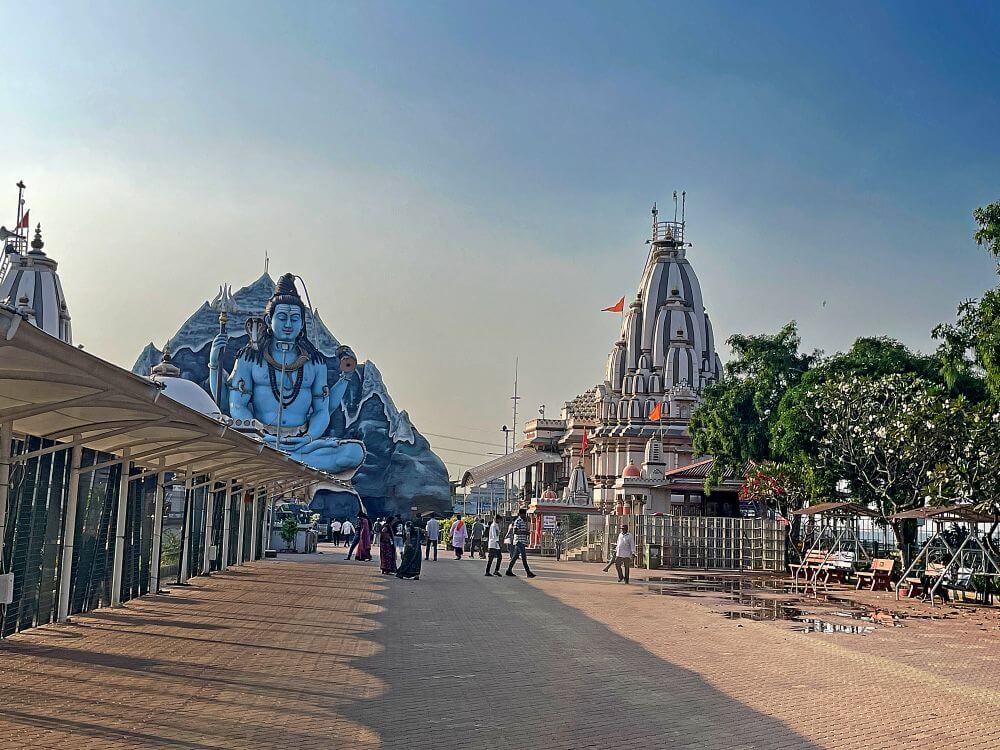
The garbhagriha is slightly sunken and enshrines the Galateshwar Patal-linga, a subterranean Shiva Lingam surrounded by a hexagonal marble enclosure. Above the lingam, a tall brass serpent is coiled, forming a protective canopy. The sanctum also houses a trishula (trident) and a marble idol of Goddess Parvati on the rear wall.
The temple is open daily from 6:00 AM to 8:00 PM, offering devotees the opportunity to participate in regular puja (worship) and archana (rituals).
It hosts religious events and celebrations year-round, with Mahashivratri being the highlight, attracting large crowds of devotees who seek blessings and participate in the festivities.
Within the temple complex, there is an entryway to the confluence (Triveni Sangam) of the Tapi, Gupt Ganga, and Naradi rivers, a site of great spiritual significance. Devotees can descend the steps leading to the banks, where facilities for changing clothes are conveniently available nearby. Adjacent to the river, a pool-like structure has been designed for devotees to perform ritual bathing. These sacred ponds are named: Naradi Kund, Ganga Kund, Gupt Ganga Kund, and Tapi Kund. Water flows into these ponds from an upper channel and eventually drains back into the Tapi River, maintaining a continuous flow. A nominal fee of ₹50 per person is charged for bathing in these ponds, which are believed to cleanse devotees of sins and grant spiritual merit. Bathing is permitted from 9:30 AM to 6:00 PM, allowing visitors ample time to participate in this sacred ritual. The Triveni Sangam continues to be a focal point of devotion and reverence in the Galateshwar temple complex.
This complex is also adorned with beautiful gardens and seating areas along the Tapi River banks, providing a serene atmosphere for devotees. A large bell near the temple steps is believed to produce an “Om” sound when rung, adding to the spiritual experience. The temple is illuminated at night, creating a stunning visual spectacle.
